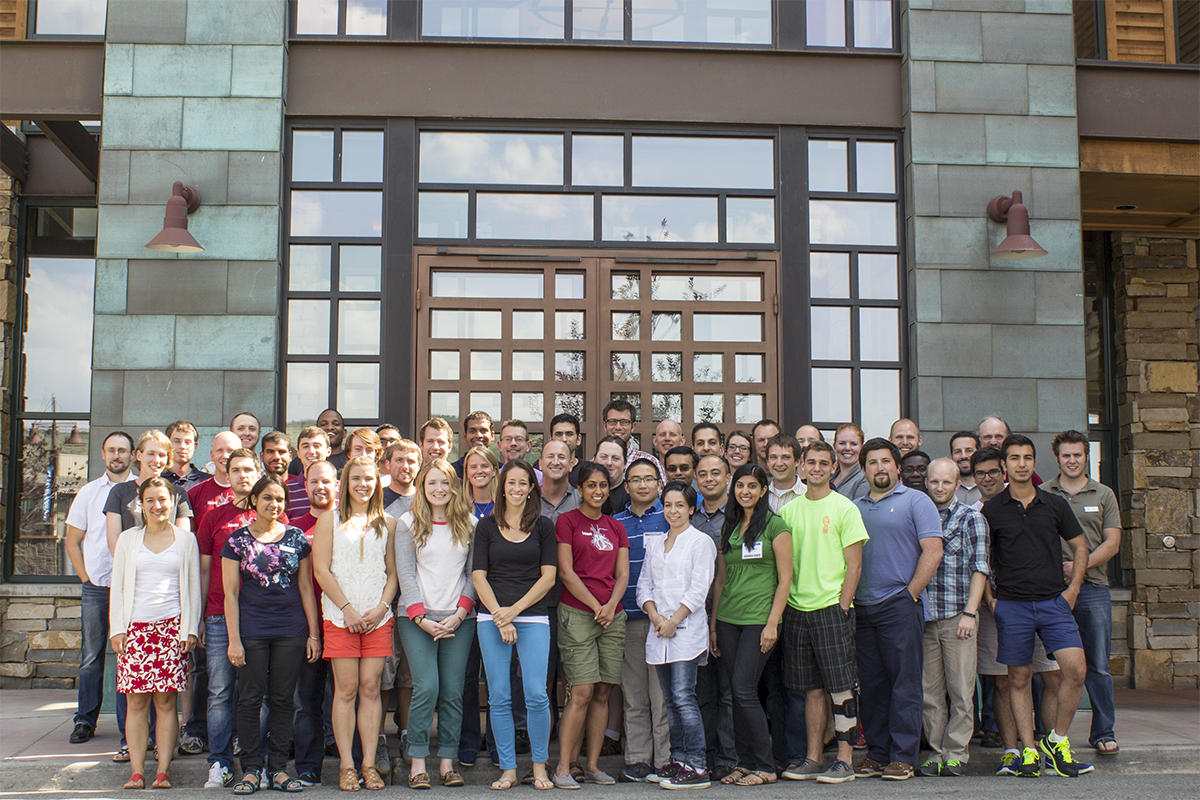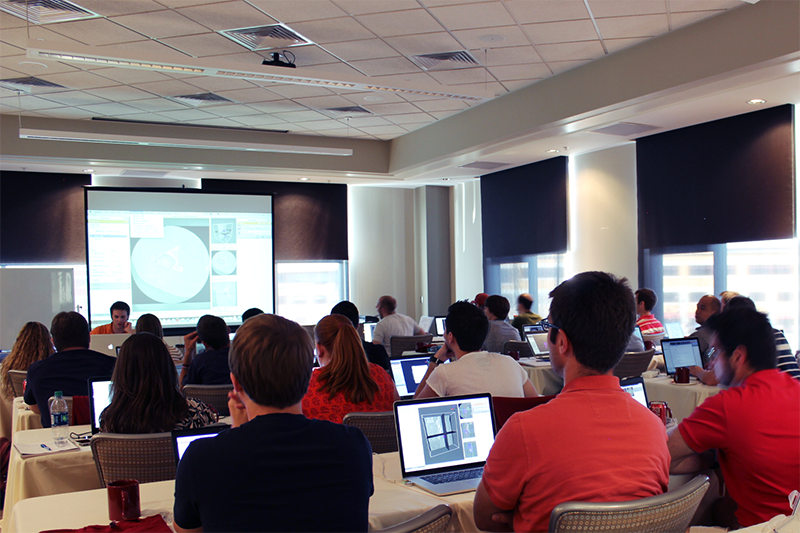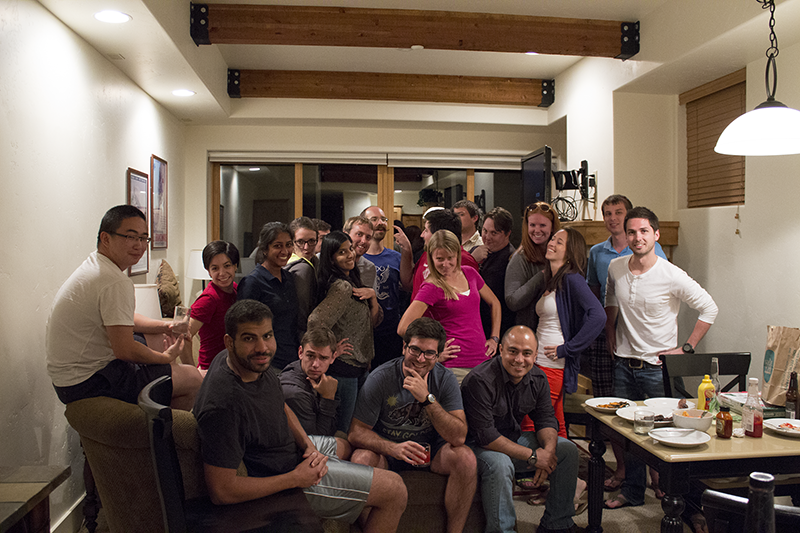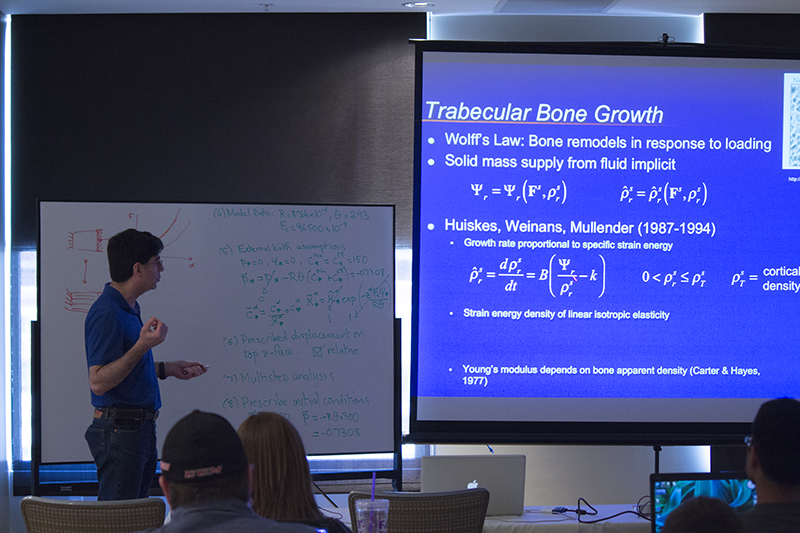The Image-Based Biomedical Modeling (IBBM) summer course was held from July 14 to July 24 in the Newpark Hotel, Park City, Utah.
The two-week summer course hosted 39 participants this year: 31 graduate students, 1 MD/PhD student, 2 postdoctoral fellows, 3 junior faculty, and 2 developers from a research laboratory / industry. Participants came from 24 institutions, including 4 from universities in Belgium and England. After the first week of common classes, participants were divided into two tracks: Bioelectricity (10 participants) and biomechanics (29 participants).
 IBBM is a dedicated two-week course in the area of image-based modeling and simulation applied to bioelectricity and biomechanics, providing participants with training in the numerical methods, image analysis, visualization, and computational tools necessary to carry out end-to-end, image-based, subject-specific simulations in either bioelectricity or orthopedic biomechanics. The course focuses on using freely available, open-source software developed under the research of the CIBC (P41 GM103545) and FEBio suite (RO1 GM083925). Students use this software to learn and apply the complete dataflow pipeline to particular sets of data with specific goals.
IBBM is a dedicated two-week course in the area of image-based modeling and simulation applied to bioelectricity and biomechanics, providing participants with training in the numerical methods, image analysis, visualization, and computational tools necessary to carry out end-to-end, image-based, subject-specific simulations in either bioelectricity or orthopedic biomechanics. The course focuses on using freely available, open-source software developed under the research of the CIBC (P41 GM103545) and FEBio suite (RO1 GM083925). Students use this software to learn and apply the complete dataflow pipeline to particular sets of data with specific goals. The IBBM course provides the detailed instruction necessary for participants to use the tools. Our main goal is to inspire new approaches in biomedical research, and to fill a clear need for training within the translational sector of biomedical computing. The course offers this training in multiple formats. First, students are trained on the pedagogical basics for image-based modeling in the fields of bioelectricity and biomechanics. Throughout this process, students receive mentoring through their interactions with the PIs, teaching assistants, and other students. Second, students experience hands-on training in the use of CIBC and MRL software tools. In addition to conventional classroom training, IBBM covers concepts such as Simulation Study Design, Grant Strategy, and Responsible Conduct of Research. Each lecture presents participants with the tools to design statistically relevant studies, write and submit grants, and perform ethical and responsible research.
IBBM includes mentoring opportunities throughout the two weeks, where students interact with the PIs and guest lecturers to learn more about approaches specific to their research programs. In addition, students are asked to come with their own data. The longer course format allows students to work on their data, with the help of teaching assistants, during breaks and in the evenings. Students also receive training through the peer relationships they form during the week, helping each other to interact with the software and discussing their research problems. At the end of the course, a subset of participants will present their results to demonstrate what they learned using the software tools.
This year's summer course was immensely successful. The combination of training formats enabled participants to learn multiple concepts in a variety of formats. The use of lectures combined with lab sessions afforded students hands-on training on new concepts. In addition, the hands-on software lab sessions, along with the support of the teaching assistants, provided participants with the tools they need to progress with their research in their home institutions. Finally, this opportunity to interact, one-on-one, with faculty and guest lecturers who are experts in these fields, in an isolated setting, provided the participants with a deeper understanding of their research areas.
 |
 |
 |
 |
Finally, the three Keynote Speakers are outstanding researchers in the biomedical fields who made an impression on the students as well as increasing their networks.
 Chris Johnson, PhD Chris Johnson, PhDDistinguished Professor of Cmputer Science Director, Scientific Computing and Imaging (SCI) Institute |
 Dawn Elliot, PhD Dawn Elliot, PhDProfessor, Duke Univerity Director of Biomedical Engineering |
 Gerard A. Ateshian, Gerard A. Ateshian,PhD Andrew Walz Professor and Chair of Mechanical Engineering & Professor of Biomedical Engineering Director, Musculoskeletal Biomechanics Laboratory |




